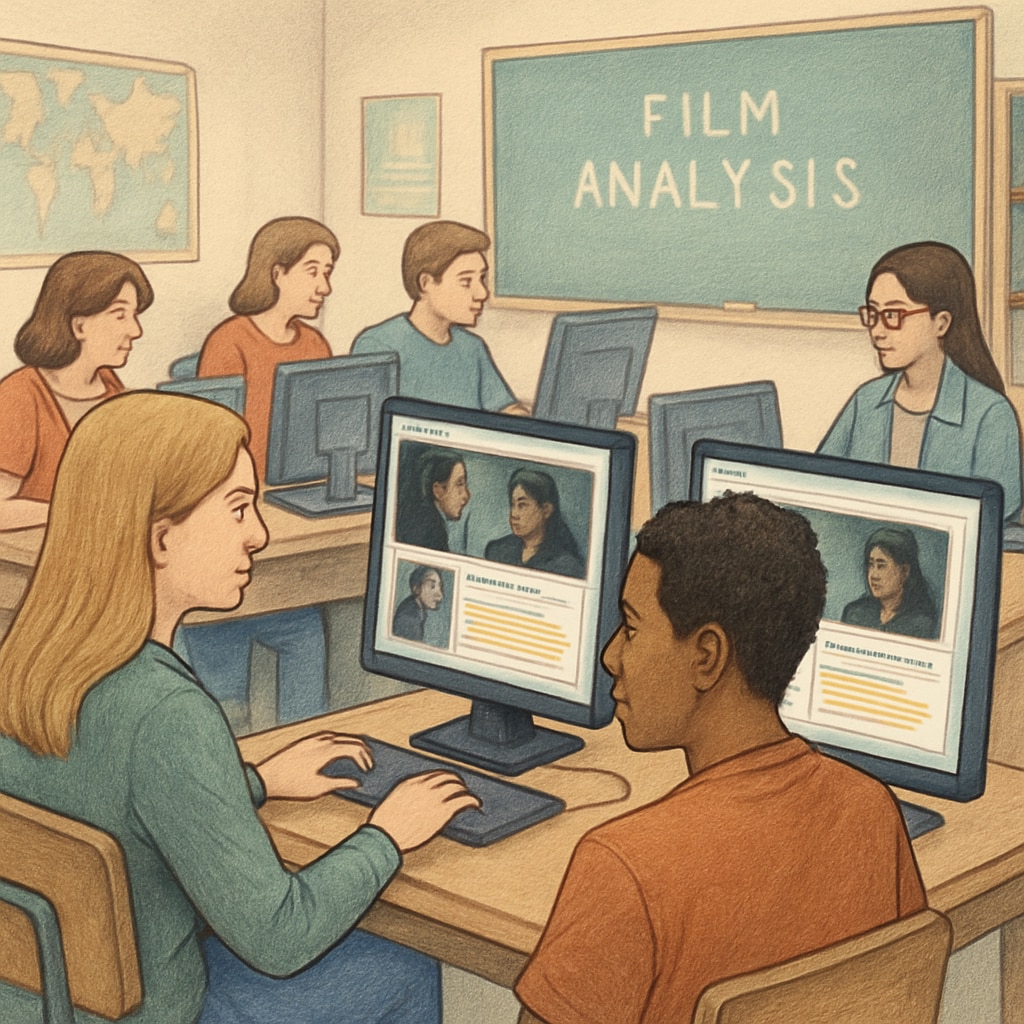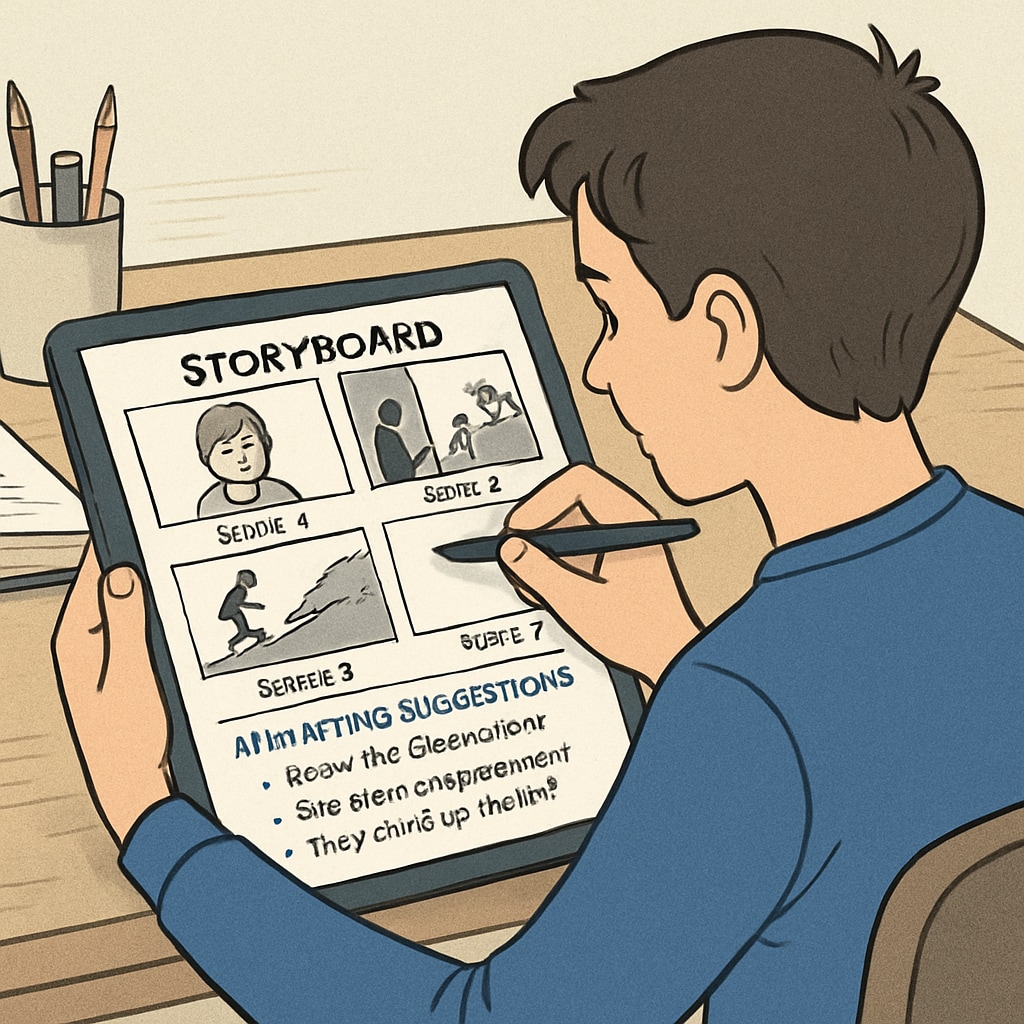In today’s digital age, teaching high school students the essentials of film and media literacy is more important than ever. By leveraging “AI writing prompts, media literacy, and visual storytelling,” educators can empower students to understand, analyze, and create compelling narratives. This article introduces innovative, free AI-powered resources designed for grades 9-12 to enhance their critical thinking and visual communication skills.
Why Media Literacy Matters in High School
Media literacy—the ability to critically analyze and create media—is a vital skill for the 21st century. With students increasingly exposed to digital platforms and visual content, understanding the language of media equips them to navigate information responsibly. For example, films, advertisements, and social media posts use visual storytelling techniques to convey meaning, often influencing opinions and behavior. Incorporating media literacy into education ensures students develop skills to interpret these messages thoughtfully.
AI tools like ChatGPT have shown tremendous potential in enhancing educational experiences. They provide students with structured prompts to explore themes, characters, and storytelling techniques, making lessons engaging and interactive.

How AI Writing Prompts Transform Learning
AI-powered writing prompts can act as a bridge between traditional education and cutting-edge technology. These tools inspire students by offering structured activities that focus on creativity, analysis, and problem-solving. Here are five sample prompts teachers can use:
- Exploring Visual Narratives: “Describe how lighting and camera angles influence the mood in a selected film scene.”
- Character Analysis: “Write a monologue for a secondary character in a film to reveal their inner conflicts.”
- Media Bias and Perspective: “Compare how two news outlets report the same event. What techniques do they use to shape viewer perception?”
- Creative Storyboarding: “Sketch a storyboard for a short film based on a given theme, focusing on visual details.”
- Critical Reviews: “Write a review of a film, focusing on how storytelling elements like plot, dialogue, and cinematography contribute to its impact.”
These prompts encourage students to think critically and creatively, aligning perfectly with media literacy goals while honing their storytelling abilities.

Benefits of AI in Teaching Visual Storytelling
Visual storytelling is an art that combines images, movement, and sound to convey a narrative. Teaching this skill helps students express themselves effectively and understand the power of visual media. AI tools provide accessible guidance for both beginners and advanced learners, helping them explore elements like composition, symbolism, and pacing.
For example, a student working on a film project can use AI to brainstorm ideas, refine dialogue, or analyze the emotional impact of specific scenes. As a result, they not only learn technical skills but also develop emotional intelligence and empathy by understanding diverse perspectives.
Integrating AI Writing Prompts into the Curriculum
Educators can seamlessly incorporate AI-powered resources into English, media studies, or creative writing classes. Here are some practical steps:
- Pair AI Tools with Collaborative Activities: Have students work in groups to analyze film scenes using AI-generated prompts, encouraging teamwork and discussion.
- Use AI for Peer Feedback: Students can use AI to draft essays or scripts and exchange feedback using automated suggestions for improvement.
- Encourage Cross-Disciplinary Projects: Combine media literacy with history or social studies by analyzing documentaries or historical films.
These methods ensure AI tools complement traditional teaching, making lessons more dynamic and inclusive.
Final Thoughts
By integrating “AI writing prompts, media literacy, and visual storytelling” into high school education, teachers can provide students with the tools they need to succeed in a rapidly evolving world. These resources not only enhance creativity but also develop critical thinking and communication skills, preparing students for future challenges. Explore these free AI-powered tools today and bring innovation into your classroom.
For more information on media literacy and visual storytelling, visit Visual Storytelling on Britannica or Media Literacy on Wikipedia.


